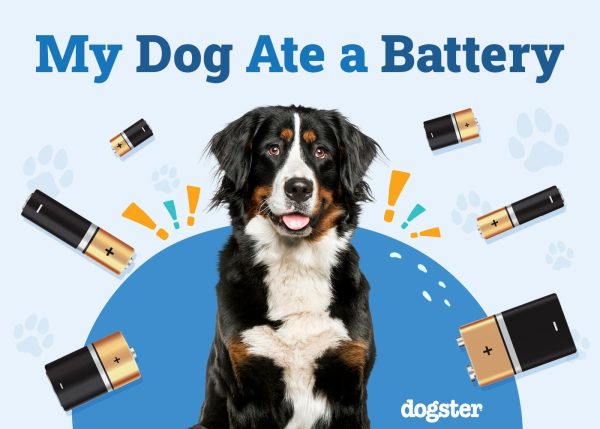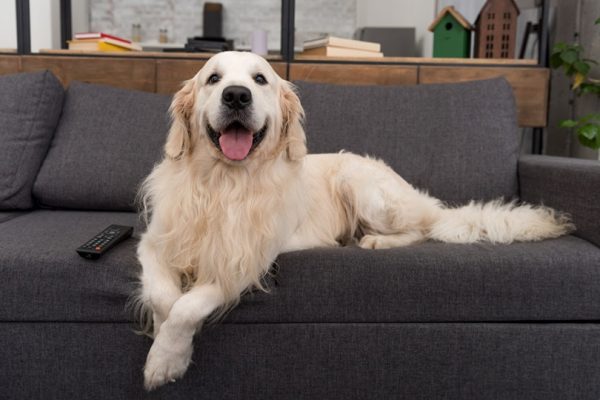In this article
When it comes to bath time for your dog, it can be stressful for everyone involved. It’s often a process that leaves a mess behind for you to clean up, and if you have a dog that hates taking a bath, it can make the entire process so much worse. Dogs that don’t like water at all will do whatever they can do to avoid a bath, and sometimes, even dogs that love to swim will resist taking a bath.
Bath time can be full of fear, stress, and physical strain, so to make the process easier for you and your dog, it’s important for you to understand the reasons that your dog may resist getting bathed in the first place.

The 6 Common Reasons Dogs Hate Baths
1. Lack of Control

Do you remember when you were a kid and someone threatened to throw you into a swimming pool? Sometimes they’d even follow through on the threat, no matter how much you voice your displeasure.
For dogs, being given a bath is a lot like that experience. They do not have control over the situation. They’re being forced to be in a tub, get sprayed with water, get scrubbed all over, be rinsed and towel dried, and, in some cases, get blow-dried. Your dog has no control over any aspect of bath time, which can be stressful and may even induce fear in them.
2. Uncomfortable Water Temperature
Anyone who has ever been too shy to tell their nail tech that the water for their pedicure is too hot will understand this one. It’s extremely unpleasant to be exposed to water that is too cold or too hot. In some cases, extremely hot water can cause burns, even in the tub at your own home. If the water temperature isn’t comfortable for your pup, then they are likely not going to enjoy their bath.
Keep in mind that your dog will also begin to get cold once they are wet, which will only increase the unpleasantness of the situation for them. Aim to provide your dog with lukewarm water. It will be cooler than what you might bathe with, but it will be an appropriately comfortable temperature for your pup and won’t lead to overheating. Aim for a water temperature around 90–98°F.
3. Past Trauma

Just like humans, dogs can experience trauma and be left with emotional scars from it. If your dog has previously had a traumatic experience with water, then they may be resistant to bathing.
This traumatic experience doesn’t necessarily have to have been related to a bath, though. If your dog experienced trauma with water or with being trapped in a confined space, then the experience of a bath may bring back some of these traumatic feelings, making the process extremely stressful and scary for them.
4. Discomfort With the Process
There are a lot of things involved in being given a bath that may be uncomfortable for your dog, even if they haven’t had bad experiences in the past. The feeling of water being poured or sprayed on them may be a novel sensation that your dog finds unpleasant, or they may not like the feeling of being covered in bubbly, slippery shampoo.
They may not like that you touch them in places they don’t like to be touched, like their feet and around their bottom, while giving them a bath. There are multiple points throughout the process of being given a bath that could be uncomfortable for your pup.
5. Stress
Obviously, there are reasons that dogs may be stressed about the bathing experience, but don’t forget that your stress level can impact how your dog is feeling. If you’re stressed at the thought of bathing your dog, then your dog is going to pick up on that.
While you’re getting things ready for their bath, they’ll likely figure out what’s going on. That, coupled with your stress level, can make your dog stressed and uncooperative before they even set foot in the bathroom. Keep your stress under control when it comes to doggy bath time and find ways to make the process more enjoyable for them and less stressful for you.
Don’t hesitate to reach out to your vet or a veterinary behaviorist if your dog shows extreme stress or aggression during baths. They will be able to give you guidance on techniques to gradually change the way your dog feels about being bathed.
If you need to speak with a vet but can't get to one, head over to PangoVet. It's our online service where you can talk to a vet online and get the advice you need for your dog — all at an affordable price!

6. Slippery Surfaces
Nobody likes to stand on a surface that doesn’t feel secure, and that absolutely includes dogs. If you don’t have a mat or grips in the bottom of your tub, then your dog may feel extremely insecure standing in a wet bathtub.
The slick surface of bathtubs and showers is only increased when wet, and your dog will not be able to get good traction during a bath without something in the tub to enhance their grip. The more your dog fights back against you during the bath, the more likely they are to slip, which will only increase the stress level of the situation.

How to Make Bath Time More Pleasant for Your Dog
Positive Reinforcement
Positive reinforcement is one of the best tools at your disposal for making bath time pleasant for your dog. Positive reinforcement can involve verbal reassurance, gentle petting, and providing high-value rewards. You can even purchase lick mats that are made to suction to the wall of your shower or tub, allowing your dog to lick off a tasty treat throughout the bath. This provides instant reward while doubling as a great distraction. You might need to be patient and form positive associations with the bathroom and tub before you progress to washing them.

Increase Traction
The slippery bathtub may be an issue for your dog, and if your dog is older or experiences issues with their limbs or joints, it may be unsafe for them to slip around in a bathtub. Consider adding a grip mat or installing grips in the bottom of your tub or shower. This will allow your dog to feel more secure while standing on the wet surface.
Be Careful With the Head
Nobody likes to get sprayed in the face with water! Be cognizant of your dog’s noggin during bath time. Avoid spraying or pouring water directly onto their face and ensure you don’t get water into their ears. Use an extra gentle hand around the head and face and be careful not to get shampoo in their eyes. If you’re unsure how to properly clean your dog’s head and face, a groomer will be able to help guide you in appropriate techniques.
- See Also: Best Dog Shampoos: Reviews & Top Picks
Be Cognizant of the Water Temperature
Just like if you were bathing a human baby, you should be overly aware of the water temperature for your pup. Test the water temperature before the bath and ensure it is safe for your dog. Throughout the bath, make sure to check the temperature of any running water to ensure it isn’t getting too hot or cold. If you want to be extra thorough, you may consider investing in a baby bathtub thermometer.

Keep Them Safe
This one sounds obvious, but it can sometimes be difficult to keep your dog safe when they’re wet and slippery and fighting back while on a slippery surface. Do everything in your power to keep your dog secure throughout their bath. If you have your dog tethered to anything in the tub, do not walk away. Some dogs will jump out and can strangle themselves. Once your dog is in the tub, you’re there to stay. Try to keep them calm and do everything you can to limit how much your dog tries to fight back against you so you can keep them safe.
Giving your pet a bath can be a difficult task, but the first step is to choose a great shampoo. We love Hepper's Shampoo Products, both of which are natural, pet-safe options specially formulated to clean your pet's skin and coat without causing irritation. Both formulas are also free of things like dyes, soaps, sulfates, and phthalates. Your pet will enjoy the soothing aloe vera and oatmeal, and you'll love the clean, fresh scents! At Dogster, we’ve admired Hepper for many years, and decided to take a controlling ownership interest so that we could benefit from the outstanding products of this cool pet company!
Image
Product
Details
For Bathing

Hepper Oatmeal Pet Shampoo
Check Price
For In-Between Baths

Hepper No-Rinse Pet Shampoo
Check Price

Conclusion
Bath time doesn’t have to be a terrible experience every time it rolls around. Implementing even small changes in your dog’s bath time routine can make the experience less stressful for both of you. If your dog is completely out of control when you try to bathe them at home, then it may be safest for a professional groomer to bathe them.
Featured Image Credit: 135pixels, Shutterstock


















